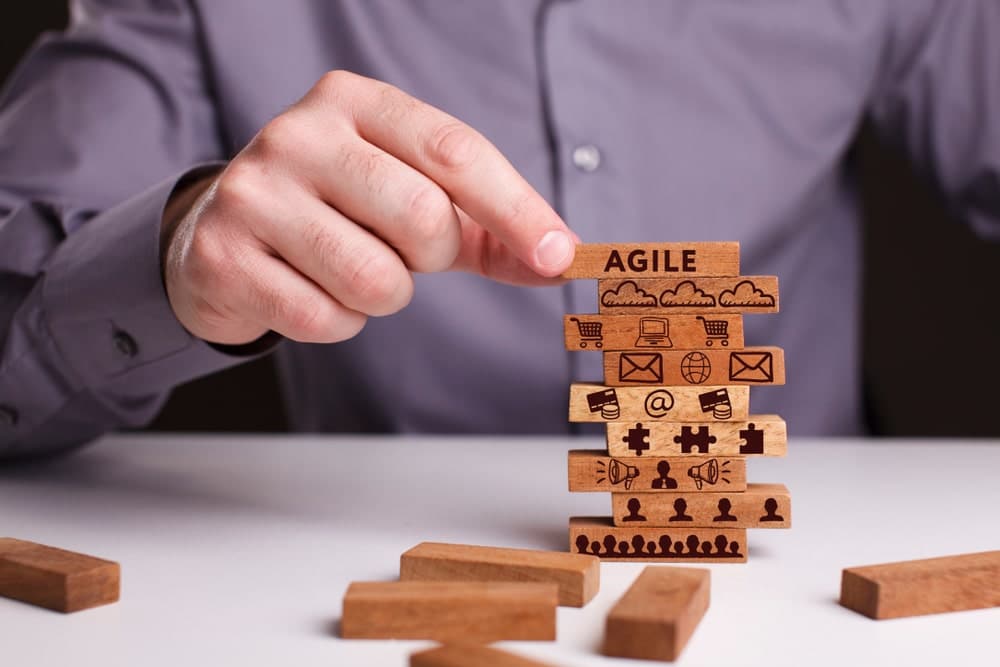17 March 2019
7

We live in one of the most challenging, rapidly changing and always evolving business environments. Those who can’t adapt to the constant transformation of the market and the ever-changing needs and preferences of the consumers are doomed to fail. Those who know how to maintain themselves always relevant and in the minds of their audience will thrive.
If you want to keep pace with the shifting trends, then you need to adopt an agile mindset. But, what does that mean and how can you and your team get there?
Let’s explore the agile concept together and learn how you can transition from waterfall to agile.
What Is an Agile Mindset Anyway?
The year was 2001 when a group of IT professionals decided that its time to change the traditional way of managing a software development project. It was clear to everyone that the traditional methods, where every request had to be approved by different departments before implementation weren’t effective. Teams wasted a lot of time waiting for things to move in the right direction instead of focusing on improving the project. Not to mention, the speed of delivery was extremely slow.
That’s how the Agile movement was born, and it aimed to create a work environment based on collaboration, interaction, support, and self-organization. If in traditionally structured companies, communication is top-down – managers develop strategies, assign tasks, and review performance, in an agile environment, communication is bidirectional. In other words, it doesn’t matter if you are a manager or an intern. Tasks are discussed, and everybody is involved, the focus being on finding and implementing the best solutions.
Although companies were a bit skeptic about the agile approach, the numbers show its effectiveness clearly. According to a study from the Massachusetts Institute of Technology, nimble companies have a revenue growth 37% higher than traditionally structured businesses.
So, there’s no question about the fact that an agile mindset can benefit your company. But, how do you implement it?
Here are some ideas.
Train Your Employees
Look, you can’t change the way your company works and expect employees to catch on to the new methods on the go. If until now communication was top-down and they had to get several clearances before getting anything done, freedom of decision might feel a bit unnatural to your team.
Conduct training sessions that will help employees understand their new roles in the system. Get them accustomed to voicing their ideas and let them know their feedback matters. Create real-life scenarios and encourage them to participate in the decision-making process.
Enable Collaboration
Another change that you must implement if you want to switch from waterfall to an agile mindset is fostering collaboration between entities that weren’t communicating effectively before. Teams must get used to working with managers who not before long only assigned tasks and reviewed performance. You can do the same things with different departments.
For instance, you can enable the development and testing teams to work together. That way, they can see how the entire process unfolds, from idea to execution and identify possible problems that might affect user experience.
Focus on Communication
Communication is crucial in this fast-changing business environment. A lack of it could mean the failure of identifying pain points that might affect consumer experience and, consequently, your revenue.
If you want to transition to agile, then you must foster an environment that encourages communication between different teams and departments. Ask teams to report on their progress and discuss the potential problems they identified. You also need to focus on training employees to react and act quickly when issues emerge. That can be problematic in companies where the waterfall method was the norm and employees are used to being told what to do instead of taking action themselves.
Encourage Creative Thinking
Sticking to the status quo might mean the death of progress in the agile business environment. That doesn’t necessarily mean that you have to restructure your company completely. You can still use some of the old techniques to help employees understand their new roles. However, be ready to abandon some ideas that don’t match the agile values. An agile environment thrives when there’s a lot of flexibility, and everyone works together to accomplish the same goal.
Leverage Agile Tools
You can’t transition to an agile mindset if you don’t have the right tools. An agile company will thrive if employees can work and communicate in real-time. That way, everyone will be aware of the progress of the project and any new changes.
Conclusion
The truth of the matter is that transitioning to an agile environment will be difficult for everyone. Managers must get used to listening to their teams’ feedback, and employees must get used to taking the initiative and voicing their ideas. What everyone needs to remember, though, is that you need to stay flexible. Don’t force new approaches and don’t get stuck in the old ways. Balance is the key to an agile mindset.
If you feel lost in the process, check out this post about how to create clear paths for your employees.
RELATED RESOURCES




